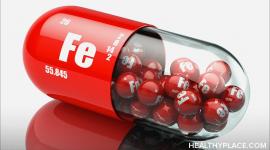Polarity Therapy for Psychological Conditions

Polarity therapy is said to help treat ADHD, depression, anxiety, eating disorders and other psychiatric disorders. Learn about polarity treatment.
Before engaging in any complementary medical technique, you should be aware that many of these techniques have not been evaluated in scientific studies. Often, only limited information is available about their safety and effectiveness. Each state and each discipline has its own rules about whether practitioners are required to be professionally licensed. If you plan to visit a practitioner, it is recommended that you choose one who is licensed by a recognized national organization and who abides by the organization's standards. It is always best to speak with your primary health care provider before starting any new therapeutic technique.
Background
Polarity was developed in the 1940s by Randolph Stone, a naturopath, chiropractor and osteopath. Naturopath Pierre Pannetier continued Dr. Stone's teachings after the mid-1970s. Polarity applies three principles and five chakras of Ayurvedic (traditional Indian) medicine. According to Tantric texts, there are a number of points in the body from which psychic forces flow. These are called "chakra points." Different hypothesis exist on the actual number (seven is the most common) and location of points. The term chakra comes from the Sanskrit cakram, meaning "wheel" or "circle." Polarity also draws from ancient Hermetic philosophy.
Touch (using the hands) is believed to influence the body's energy flow. Bodywork is said to remove energy blockages and strengthen energy fields. Dietary changes (believed to purify or build health), counseling, yoga, craniosacral therapy and other bodywork techniques may be integrated.
Scientific study of the effects of polarity in humans is lacking.
Theory
Polarity therapy is based on a theory that energy flows through the body along five pathways and that this flow can be affected by the therapeutic placement of the practitioner's hands at specific points to correct disorders or imbalances. Polarity practitioners have proposed that cells in the body have negative and positive poles and are involved in this flow of energy. Practitioners aim to access a patient's energy using palpation (touch), observation and patient interviews. Polarity shares some principles with the yin-yang concept in traditional Chinese medicine and the chakra system in Ayurvedic medicine.
Polarity treatment often begins with a consultation and a history of the patient's health problem. Therapy may be conducted on a treatment couch. The practitioner may use physical manipulation techniques and apply pressure to certain points on the body.
Treatment may last for 60 to 90 minutes. Weekly sessions for up to eight weeks, with occasional maintenance treatments, may be suggested.
Polarity may integrate yoga. Polarity yoga consists of a group of simple relaxing exercises intended for easing pain, "cleansing," improving muscle tone or energizing. Postures often use gentle rocking and stretching movements combined with vocal expression.
Evidence
There is no evidence for this technique.
Unproven Uses
Polarity has been suggested for many other uses, based on tradition or on scientific theories. However, these uses have not been thoroughly studied in humans, and there is limited scientific evidence about safety or effectiveness. Some of these suggested uses are for conditions that are potentially life-threatening. Consult with a health care provider before using polarity for any use.
| Anxiety Arthritis Attention-deficit hyperactivity disorder Autism Cancer Cerebral palsy Chemotherapy side effects Chronic fatigue syndrome Depression Digestive disorders Eating disorders Exercise-induced asthma Exhaustion Fatigue Hair loss | Hardening or scarring of breast tissue in mastectomy patients |
Potential Dangers
The safety of polarity has not been thoroughly studied scientifically. Polarity should not be used in place of more proven therapies for potentially severe conditions.
Summary
Polarity has been suggested for many health problems, but it has not been proven effective for any specific one. Do not rely on polarity alone to treat a potentially severe medical condition. You should speak with your health care provider if you are considering polarity therapy.
The information in this monograph was prepared by the professional staff at Natural Standard, based on thorough systematic review of scientific evidence. The material was reviewed by the Faculty of the Harvard Medical School with final editing approved by Natural Standard.
Resources
- Natural Standard: An organization that produces scientifically based reviews of complementary and alternative medicine (CAM) topics
- National Center for Complementary and Alternative Medicine (NCCAM): A division of the U.S. Department of Health & Human Services dedicated to research
Selected Scientific Studies: Polarity
Natural Standard reviewed the available scientific literature to prepare the professional monograph from which this version was created.
Some of the more recent English-language articles are listed below:
- Clifford D. Hospital study shows benefits of polarity therapy. Energy News Amer Polarity Ther Assoc 1997;12(2):1.
- Dudley H. Polarity therapy case study: working with Evan. Energy News Amer Polarity Ther Assoc 1998;13(4):1.
- Gilchrist R. Polarity therapy and counseling. Energy News Amer Polarity Ther Assoc 1995;10(4):17.
- Harwood M. Study: using polarity therapy with ADHD. Energy News Amer Polarity Ther Assoc 1997;12(3):26-27.
- Roscoe JA, Matteson SE, Mustian KM, et al. Treatment of radiotherapy-induced fatigue through a nonpharmacological approach. Integr Cancer Ther 2005;4(1):8-13.
- Siegel A. Polarity Therapy: The Power That Heals. Dorset, UK: Prism Press, 1987.
- Sills F. The Polarity Process: Energy as a Healing Art. Berkeley, CA: North Atlantic Books, 1989.
- Stone R. Polarity Therapy: The Collected Works of Dr. Randolph Stone. Sebastopol, CA: CRS Pubs, 1986.
- Young P. The Art of Polarity Therapy: A Practitioners Perspective. Dorset, UK: Prism Press, 1990.
back to: Alternative Medicine Home ~ Alternative Medicine Treatments
APA Reference
Staff, H.
(2008, October 18). Polarity Therapy for Psychological Conditions, HealthyPlace. Retrieved
on 2025, December 20 from https://www.healthyplace.com/alternative-mental-health/treatments/polarity-therapy-for-psychological-conditions

